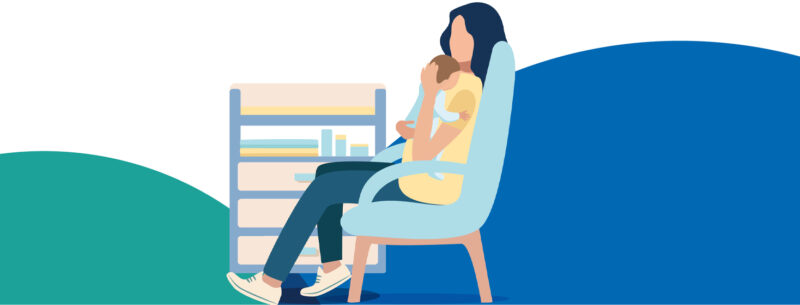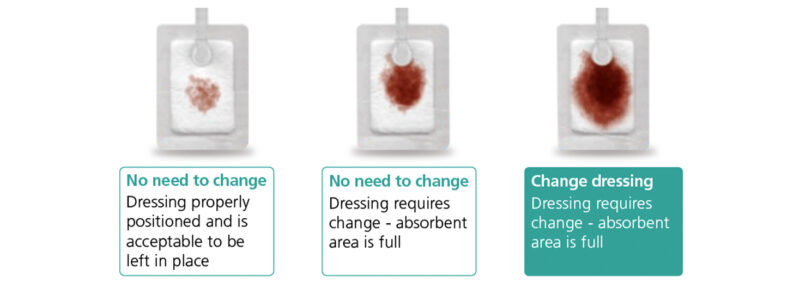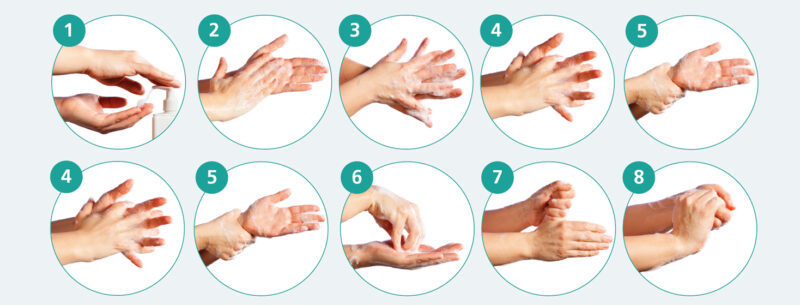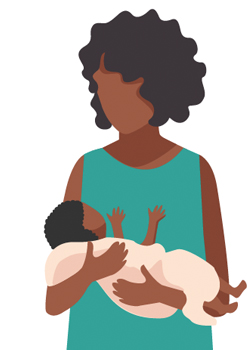

Maternity services
Looking after your wound
This leaflet has been provided to give you general information about caring for your caesarean section wound. It also contains information on how to seek support if you have any concerns.
The most important thing is that the dressing used for your wound is comfortable and absorbent enough to prevent leaks. Dressings can stay in place for up to 7 days unless the dressing becomes loose, or leaks, or becomes uncomfortable (or you have been advised otherwise).
If this occurs, please contact the Maternity Advice Line on 01609 763093.
Try to avoid getting the dressing wet.
Does my dressing need changing
Most caesarean section dressings will stay on for 5 to 7 days. Your midwife will arrange to visit on day 5 to 7 to assess whether your wound is healing as we would expect.
The ideal wound dressing is designed to minimise the level of wound disturbance. Changing the dressing too often can lead to slower healing. Dressings that become too wet may contribute to wound breakdown. On rare occasions, you may need your dressing changed before day 5 to 7.
Routine dressing
To be removed on day 5

PICO dressing
Used if your BMI is over 40 or you have type 1 or 2 diabetes. To be removed on day 7.

Most women will not need any further dressings after day 5 to 7. If you are advised to continue dressing your wound, see the guide, below on how to change your dressing safely.
Hand hygiene
- Before and after touching your caesarean section wound or dressing, always wash your hands correctly.
- Wash your hands thoroughly with soap and water for 20 seconds, especially between fingers and palms of hands.
- Dry hands with a clean towel or kitchen roll.

Removing the dressing
Your community midwife will visit you on the day your dressing needs removing. They will remove the dressing and check the wound.
On the rare occasion this is not possible, follow these guidelines to remove the dressing carefully on day 5 (routine dressing) or day 7 (PICO dressing).
- Carefully remove the old dressing without touching the part that has been in contact with the wound or touching the wound itself.
- If the dressing is stuck, soak with water or saline and wait for the dressing to loosen – allow a bit of time and avoid pulling as this will be painful and will damage the wound.
- If the dressing is adhesive or has an adhesive border, avoid peeling it off. Instead, lift one or more corners of the dressing and stretch it horizontally along the skin surface to break the adhesive bond. Again, take your time and continue gently stretching until the entire dressing lifts.
- Place the dirty dressing in a waste bag and wash your hands.
Caring for your wound after the dressing is removed
- Have a shower rather than a bath
- Avoid soaps, shower gel or other products directly on the wound
- Avoid rubbing the wound
- Pat the wound dry with a clean towel
- Wear underwear and clothes that sit above the wound
Be aware of what is happening with the wound
Signs your wound is healing
Any swelling or redness should be reducing after a few days
Leakage from the wound should be minimal and stop within a few days
Your scar should be closed with stitches and start to flatten
Your stitches will dissolve themselves
Pain should be reducing
Signs your wound is not healing
Increasing redness, swelling or leakage from the wound
Increased redness may look different on darker skin tones – it may look purple or brown
Increasing pain
New or increased bleeding
Scar has areas which have opened
You notice an unusual smell
You begin to feel generally unwell
As you are the person most familiar with your own body and skin, we would encourage you to let us know if you are concerned about any changes from your normal state.
Ring our maternity advice line on 01609 763093 or NHS 111 if you are worried.

Who should I contact if I am worried?
If you have any concerns about your caesarean section wound, contact your midwife, or ring our maternity advice line.
If you need a replacement dressing – please speak to your community midwife.
Maternity Advice Line
Telephone: 01609 763093
Email: [email protected]
Adapted from a document produced by the Legs Matter Campaign available at:
https://legsmatter.org/ (Accessed: 6 November 2023).
Patient experience
South Tees Hospitals NHS Foundation Trust would like your feedback. If you wish to share your experience about your care and treatment or on behalf of a patient, please contact The Patient Experience Department who will advise you on how best to do this.
This service is based at The James Cook University Hospital but also covers the Friarage Hospital in Northallerton, our community hospitals and community health services.
To ensure we meet your communication needs please inform the Patient Experience Department of any special requirements, for example; braille or large print.
T: 01642 835964
E: [email protected]